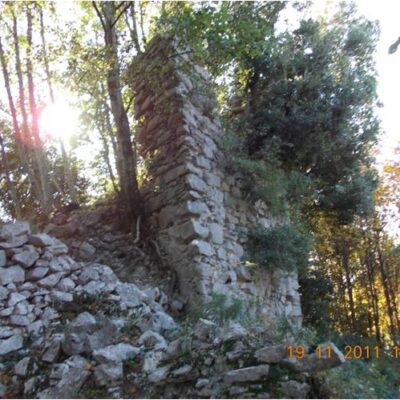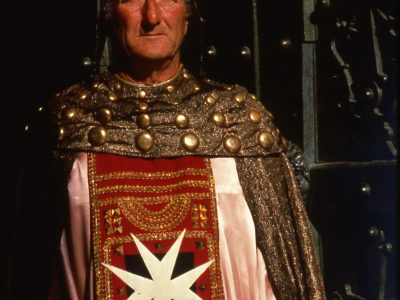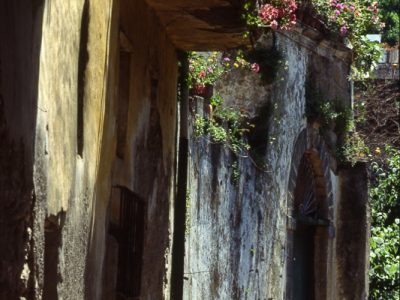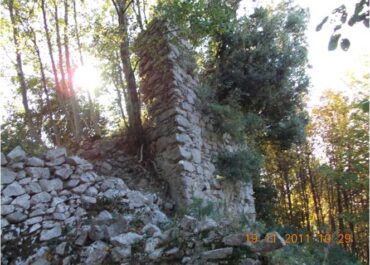History

During classic antiquity in this area there has been a constant presence of noble people who chose the Coast to build their villas to have rest during their holidays or of inhabitants of big near towns who came here to exploit agricultural and wood resources of the hill and mountain area. Costiera Amalfitana has been protagonist of Mediterranean medieval history thanks to the strong role of trading power played by Amalfi since 839 AD, year of the proclamation of the Maritime Republic.
The Middle Ages opened this area to influences from the Mediterranean East thanks to the trade that Amalfi and all the lands of the Duchy, which stretched from Vietri sul Mare to the island of Capri, entertained with Byzantine ports. Subsequent history saw the enfeoffment of the area by Italian patrician families who acted as great patrons of the land. The transition from feudalism to municipalities was due to a great gesture of love for their land on the part of the inhabitants, who redeemed the Coast at great cost.

Amalfi
Amalfi, Maritime Republic from 1st of September 839, was one of the most important centres of Mediterranean in the Middle Ages, representing the meeting point between East and West thanks to warehouses that was able to build in various seaports. These contacts made it so big to join around itself a territory, Amalfi dukedom, which swept from Vietri sul Mare as far as Capri isle, and it intervened to defend southern Italy and Papacy against saracenic attacks, excepting stipulating in a second moment diplomatic agreements with them to obtain trade facilities. With Maritime Republic decline the territory became feud of big families who carried on making both town and dukedom big from the architectonic point of view. At the end of the feudal period inhabitants decided to buy the whole dukedom and also in Amalfi rose the public University (the town hall).

Atrani
Atrani was the residence of amalfi noble people. Very near to the big town it nearly represented the favourite one so much that in Atrani, in San Salvatore de Birecto Church, amalfi doge received political investiture and together with important people stream he entered into amalfi residence. This relationship with Amalfi was enduring and the centre shared with it fame and decline for the whole history. Also Atrani territory preserves traces of eremitic monks’presence and in fact a small grotto with frescos, situated on the border line with Amalfi, the tradition says that an hermit monk, Saint Saba di Collesano, sheltered there. In the post war period for a quite long period it was unificated to Amalfi but then it gained council autonomy.

Cetara
Cetara history is linked to the role of fishing centre of the dukedom, it is not a case that it is the village of the whole Costiera that still has a deep-sea fishing fleet which remains outside from the port also for long periods. It was born as a stronghold for Saracens and then it played an important role among estates which belonged to S. Maria of Erchie Abbey first and then of the biggest and most famous SS. Trinità of Cava dei Tirreni Abbey. For the last one it represented the access to the sea and therefore it was a strong source of incomes. It was attacked by Saracens in 1543 and population who did not yield to be imprisoned by invaders either was killed or escaped to Naples, abandoning the village. After gaining independence following the end of Amalfi dukedom enfeoffment, of which it was part, it became an integral part of Vietri sul Mare municipality and only in the mid of 1800 it became an independent municipality.

Conca dei Marini
In ancient times, Conca dei Marini was satellite centre of the biggest and richest Amalfi. It served the capital of the Dukedom from the economical point of view, having at its disposal a good group of boats for fishing or for trades also at long-range, and since it represented the arrival point of cut wood which arrived from Agerola woods. It shared its fate with Amalfi period of enfeoffment and then of the annexation to Italy Reign. After a period of sharing administration with the near Furore, it became an independent municipality. The village coast of arms contains an important reference to the role that it had during the angevin period, in fact there are three lilies of France, heraldic symbol of D’Angiò family

Furore
Furore belonged to Amalfi Dukedom and for its position, at an intermediate altimetric attitude, it represented a linking point between the coast and hinterland of Lettere and Gragnano side, which then were the defensive strongholds on the north area of Lattari Mountains. According to the tradition the village was built thanks to the arrival of Dukedom citizens who had to be dismissed from Amalfi because of their political ideas and therefore they were sent here where there was very few or nothing at all. Naturally with passing of centuries Furore gained an own political connotation insomuch as to become an independent municipality.

Maiori
According to the tradition Maiori was an Etrurian centre, so that local buildings have always witnessed of findings of burials which would send back to typical Etrurian cinerary jails, but since these would not keep to historical reality, they collocate the Etrurian seat in a castle which is manifestly of medieval period. A part from the tradition, Maiori was an important natural linking point between the pass, which allowed the transit towards Vesuviana valley, and Costiera. Surely before the institution of the Dukedom the area was lived, as other areas located at the mouth of torrents, thanks to the fertile soil that here was surely in abundance because of the topography of the ground. Once part of Amalfi Dukedom, Maiori shared its fortunes and its misfortunes: it had to play an important role in defense since along its coast there were two towers which probably had to be linked through a defense wall facing on the sea (of this wall it is possible to see some remains), while the upper area was checked by Thoro Plano Castel. In 1900 two inundations put to a hard test the village that on both occasions had numerous human being losses.

Minori
Surely Minori is one of the centres which has been lived since ancient times. The discovery of a great maritime villa dated I century Before Christ, contributes to clarify first steps of urbanization of the area. The out-and-out birth of the built up area dates back to Medieval time in the wake of the evolution which characterized the area which followed Amalfi and its leading role in Medieval Mediterranean. Surely Minori lived alternate events as all coast places, above all because of the serious crisis which hit this territory following Guerra del Vespro which stopped maritime trade for a long period. There were also plagues and famines, but Minori has always been able to turn around also thanks to lemon trade, of which it carries on being one of the most active centres of Costiera Amalfitana.

Positano
During roman period Positano was attended as a holiday resort as it is witnessed by the villa discovered at the end of XIX century and that has been involved in a deep excavation. Naturally at the villa time no urban settlements existed; this urban settlement was rised later, after the severe idro-geological crisis which involved a lot of areas of Costiera Amalfitana and it destroyed many villas which had been built by Romans along the litoral. This crisis was due to the placer mining in the valley, in a not very well specified period, of the material which had been deposited on ridges following Vesuvio eruption of 79 A.C. and that coming down because of rain it caused destruction and death. Positano was born as a fishermen centre and it was so preserved till mid of the last century when in place of sun umbrellas on the beach there were only boats who belonged to those who lived thanks to fishing. Naturally in Medieval time it was part of Amalfi Dukedom and it shared its fortunes and misfortunes.

Praiano
In ancient times, according to the tradition, the name Praiano was Palagianum, but the centre had birth and consolidated itself in medieval time following the glorious Amalfi deeds. During centuries people from Praiano dedicated themselves above all to maritime trade and to fishing while those who lived in the upper part of the village started cultivating terraced gardens. In a locality called Praia, where a small inlet still offers recover to fisherman’s boats, it is still possible to see ancient “monazzeri” which allowed fishermen to haul boats and to repair themselves when sea conditions did not allow to go out fishing.

Ravello
From immemorial time opposite to near Scala but also to the strongest Amalfi, Ravello, according to the tradition, would derive its name from a riot that local patricians organized against Amalfi which did not want to take part to the expedition against Alessio Comneno, imperator of Bisanzio, in 1081, riot which instead was wanted by Normans and supported by people from Ravello. In 1086, it became Episcopal centre independent from Amalfi always for Normans’will and Ravello gained a central role as trade power. It often had to defend itself by external attacks, the first time the town was able to resist, the second time because of the sudden arrival of the enemy it was not able to fight back and as a consequence the whole Amalfi Dukedom toppled and had a lot of human being and material losses. Along the centuries it was able to preserve a certain economic robustness even though there have been numerous plagues and also some earthquakes which hard put to the architectures of the town.

S. Egidio del Monte Albino
S. Egidio del Monte Albino was already lived in roman period, thanks to its favourable position, for the agricultural exploitation of the area, even though this frequentation did not create any kind of urban shape. During Medieval time, the village moved around Nuceria dei Pagani influence and they shared the fate when this town was destroyed by Ruggiero il Normanno in 1137. It after became Universitas with its own mayor and, once entered into Regno d’Italia since 1861, achieved to add to its name the specification “del Monte Albino”, to be distinguished from other towns with the same name.

Scala
According to local tradition, Scala is considered the most ancient village of the coast because the history referred by Chronicon Salernitaum (XI century) wants that roman shipwrecked persons who arrived here during their wandering found the area lived by men unknown to them. Probably a part from the legend it is necessary to see in this account an ancient attending for agricultural aims or for wood resource exploitation. In medieval time it changed from “terra” to “civica” and in 987 it was risen to bishop seat depending from the one of Amalfi. There were numerous fights with the near Ravello, to stop them in XIV century there was a wedding between two representatives of the most famous families of the villages: Antonio Coppola and Marinella Rufolo. Afterwards the two municipalities were also unified both for what concerns the bishop seat (the bishop seat of Ravello included the one of Scala since 1600 and it was suppressed in XIX century) and for what concerns government in the last century.

Tramonti
Surely Tramonti territory has been one of the first to be lived. Life tracks date back to prehistory (some grottos is plain that were lived) but for sure a crucial moment is the end of III century B.C., when at the same time of Nuceria destruction carried on by Annibale (216 B.C) the town inhabitants escaped on nearby mountains. To this period dates a witness which reminds of temporary lived structures in Polvica area. In the same area during the roman period a rural villa was built and it was destroyed by alluvial consequences linked to Vesuvio eruption in 79 A.C. and it was intended for agricultural exploitation of the area (a vineyard mould made in occasion of the excavation witnesses the purpose of the settlement). The village structure, deprived of an out-and-out centre and made of a group of scattered farmhouses, a lot of them with rural toponyms (Trugnano, Capitignano, Cesarano etc.) sends back to this agricultural activity. During Middle Age it was outpost of the coast defence thanks to the numerous sighting points both on Costiera Amalfitana and on Vesuvio plain. At the end of 1400 it obtained numerous privileges by Ferdinando I d’Aragona who found shelter here after Sarno defeat.

Vietri sul Mare
Vietri sul Mare witnesses a history which sinks its roots in classic antiquity. In the past it has been very discussed if in Vietri it had to be identified the etrurian centre of Marcina which represented the divide between Etrurian in the North and Greek of Magna Grecia in the South. Burial findings and the presence of a complex of thermal baths witness that here there has been more than a simple attendance and perhaps also the toponym might send back to an antiquity more or less known already in medieval period ((Vietri < Vetus = old, ancient). Far away from Amalfi, it gravitated around Salerno and it represented a bit the appendix where it was produced what was required by the big Lombard town. It rotated around the big Benedictine SS. Trinità di Cava dei Tirreni abbey and it was the only municipality of Costiera Amalfitana to be provided with a railway station which made it the ideal entrance door for the Coast already at the end of XIX century.

Corbara
Corbara with its position at the borders of Vesuvio valleys shared more with this than with Amalfi dukedom its most important historical phases. The presence dates back, in fact, to the period of the ancient peopling, when at short distance rose big towns, such as Pompei, Nuceria Alfaterna. From here some inhabitants had to start living here to better spoil happy agricultural characteristics giving life not to urban settlements but to small rural homes or rural villas. In a later period the name of Corbara appears (1010) and it carried on gravitating around the near Nocera dei Pagani and the neighboring S. Egidio del Monte Albino, so that already in XVI century it elected only one mayor with S. Egidio. The village belonged to S. Trifone Monastery of Ravello and it became independent since mid 1700.

